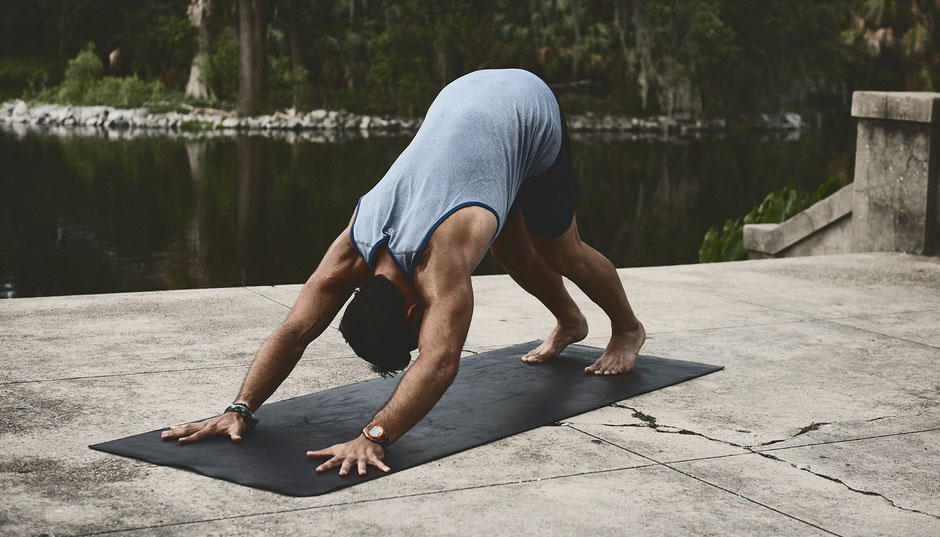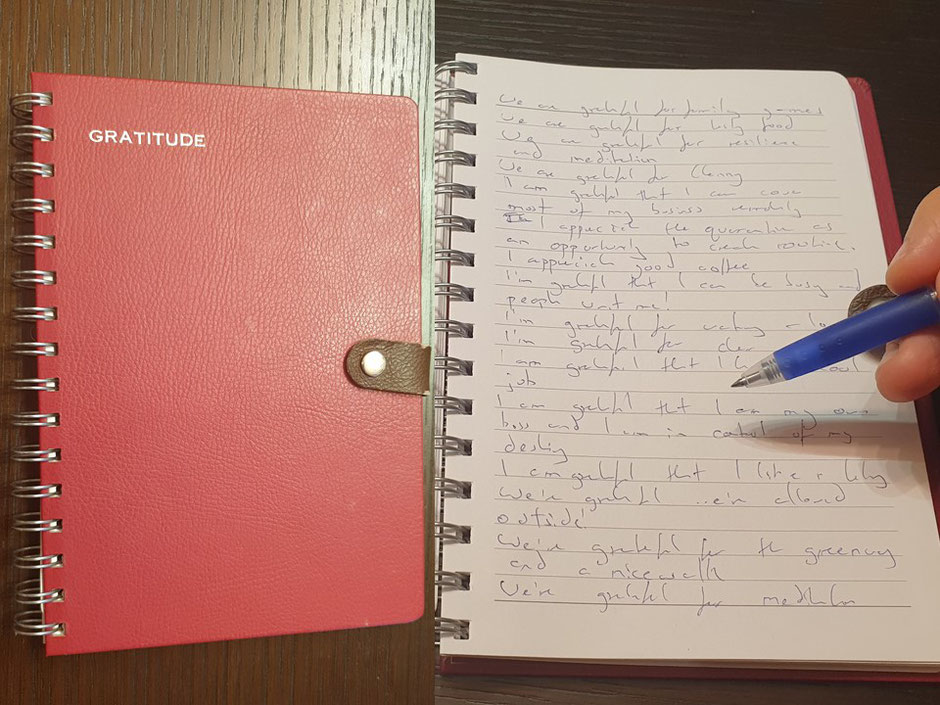…with science backed biohacks
If you’ve started the New Year feeling like 2021 is not shaping up as you had hoped then you’re not alone. So many people are feeling the same. There was a lot of expectation on 2021 but we still have tons of covid related issues, lockdowns, craziness in the US, worries over the economy and big tech increasingly treating us like commodities; censoring and selling our personal data. This stuff hasn't magically disappeared as the calendar switched from Dec 31 to Jan 1.
So, what does the future look like? Better or worse? I've no idea.
We can’t control the future. The only thing we can control is our thoughts, feelings and actions. So rather than worrying about what we can't control let’s work on what we can control to get us feeling better right now. That's why we've put together this new 5 step guide with simple, actionable and science backed steps to help you reduce stress and anxiety.

Today we’re going to present a 5-step action plan that you can easily, and effortlessly, incorporate into your daily life to get you feeling better, thinking better and hence performing better.
We’re going to do this by building in a new morning routine to exercise your thoughts and your emotions to wrest control back from governments, media and the energy vampires in your life and back into your very capable hands.
Why do we need to do this? Look if you want money you have to work hard, if you want to be fit and healthy you need to put effort into your exercise and your diet, and, ergo, if you want a healthy mind you need to work on it!
Week 1: No News
No reading the news in the morning. In fact, even better give up the news completely. The news is largely negative, pointless and is not even representative of what’s going on in the world anyhow. It is purely a reflection of what the media wants you to know or what it thinks will sell newspapers/generate clicks.
Don’t believe me. Some of the biggest stories at the moment (Jan 2021) are the almost 1 million refugees living in Bangladesh that were exiled from Myanmar. Cameroon’s Military continuing to massacre its own civilians. And it looks like a record 1.8 million people will die from tuberculosis in 2020 – 30% more than 2019. This is about the same number of people who died from covid but it’s not featured in the popular news at all. My point? Don’t worry about F.O.M.O. (Fear Of Missing Out) because you already are!

The best thing about not watching the news is that (A) it massively reduces the negativity in your life and (B) gives you infinitely more topics to talk about with your friends over a coffee, “So tell me, what’s Trump up to these days?”.
Let’s start gently. Give up the news in the morning, for a week, and then once you have successfully done that move onto week 2 and the new habit to add to your routine.
As to the science? In a 2007 paper[1] published in the International Journal of Behavioral Medicine they concluded, “These findings demonstrate that watching the news on television triggers persisting negative psychological feelings that could not be buffered by attention-diverting distraction (i.e., lecture), but only by a directed psychological intervention such as progressive relaxation.”
Week 2: Deep Abdominal Breathing
Breathing is one of the most powerful tools you have at your disposal to calm yourself down, reduce the crazy thoughts that keep invading your head, and boost your parasympathetic nervous system (the relaxation branch of your central nervous system).
3 minutes of 10 breaths deep breaths every morning is going to be essential to setting you up right from a relaxation point of view. Do this first thing in the morning, before doing anything else (aside from maybe taking a pee or grabbing a glass of water).
And there are tons of scientific papers on the benefits of slow and diaphragmatic breathing. In 2015 Ravinder Jerath [2] et al concluded, “Detrimental effects of stress, negative emotions, and sympathetic dominance of the autonomic nervous system have been shown to be counteracted by different forms of meditation, relaxation, and breathing techniques. We propose that these breathing techniques could be used as first-line and supplemental treatments for stress, anxiety, depression, and some emotional disorders.”
Week 3: Heart Focused Breathing
Next stage is to regulate your emotional state. Ideally done after you have put yourself into a more relaxed state first using the step above. And the best way to do that is to follow HeartMath’s Heart-Focused Breathing™ Technique[3]..
How is it done? Focus your attention on your heart. Imagine your breath is flowing in and out of your heart or chest area, breathing a little slower and deeper than usual. Suggestion: Inhale 5 seconds, exhale 5 seconds (or whatever rhythm is comfortable).

HeartMath have 30 years’ worth of studies over in their research library[4] that explore this topic in depth covering topics such as
- The Impact of a New Emotional Self‑Management Program on Stress, Emotions, Heart Rate Variability, DHEA and Cortisol[5] and
- Emotional Stress, Positive Emotions and Psychophysiological Coherence[6].
How long to do it? 5 mins.
Week 4: Stretching
Now you’re all nice and relaxed you can focus on 6 minutes of stretching to loosen those tight bits, get oxygenated blood flow to restricted areas of your body and get you into a more “normal human shape”! This will set you up nicely for the day to ensure you attack your daily tasks with better ergonomic posture and will additionally stimulate the mind without the need for caffeine.

What to stretch? Well just about everyone we work with has tight calves, hamstrings and hips so that’s a good place to start as a general rule. A properly performed yoga downward dog is great for the lower posterior chain. However only you know yourself so rather than us guessing it’s much better to work with a qualified corrective exercise specialist [7] to have them write a stretch routine for you.
If you want to DIY an alternative suggestion would be to follow the self-stretch assessment laid out in Paul Chek’s Book, How to Eat Move and be Healthy which you can pick up on Amazon [8]. This will help you identify the most pressing areas of concern in your body.
How long to stretch for? Well, it depends on how tight you are and how many tight bits you have! I recommend starting off with 6 minutes to keep things manageable for now and just focus on the larger primary movers (big muscles).
In this paper[9] they demonstrated that a regular mini-stretching routine in the workplace was “effective for reducing levels of anxiety, bodily pain and exhaustion, and for raising levels of vitality, mental health, general health and flexibility.” Now just imagine how even more effective it would have been if it was a tailored, rather than cookie cutter, programme.
Week 5: Gratitude Journaling
In 2003 Robert A Emmons et al published a paper[10] that divided groups into 3. Group A were assigned to daily journaling about negative things, Group B were assigned to those journaling about positive things and Group B neutral things. The gratitude-outlook group was the only group to exhibit heightened well-being across several of the outcome measures.

We suggest 2 to 3 minutes of journaling 3 things that you are gratefully for every morning. You can do this right after your stretching or when you’re having your morning coffee/tea/water/breakfast.
Wrapping up
So, let’s see what this looks like in total during your 5th week and beyond:
- Step 1 (week 1): No News (time taken: -20 minutes)
- Step 2 (week 2): Deep Breathing (time taken: 3 mins)
- Step 3 (week 3): Heart Focused Breathing (time taken: 5 mins)
- Step 4 (week 4): Stretching (time taken: 6 mins)
- Step 5 (week 5): Gratitude Journaling (time taken: 3 mins)
Total Time taken: 17 minutes! And because you gave up 20 mins of news watching/reading you still have 3 minutes to spare!
What we’re doing here is layering a whole bunch of scientifically proven mood enhancing techniques in a sensible planned order to attain the greatest benefit. And by slowly increasing 1 each week you can build it into an easy, effortless and sustainable morning practice.
And as a bonus, if you’re having trouble sleeping at night[11], then repeating steps 1 to 3 and 5 in the evening will be extremely helpful. Stretching can sometimes wake you up a little so may not be helpful for sleep depending on your physiology.
We’d love to know how you get on and if you have any questions just shoot us an email or WhatsApp and we’d be happy to help.
To your health, happiness and longevity,
The Levitise Team
P.S. If you love this blog post then do check out our fortnightly newsletter where you'll get the freshest content on health, nutrition and fitness delivered straight to your inbox. Don't miss out and sign up here with just your name and email.

Write a comment